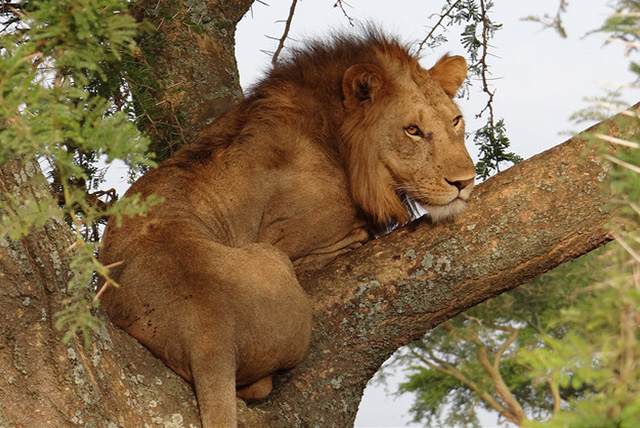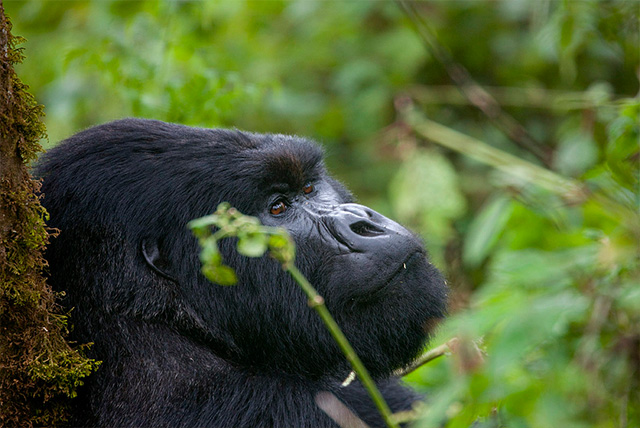Calving Season in Serengeti
The Calving Season of the Wildebeest Migration: A Hidden Gem of the Great Migration
When we envision the Great Migration, we often picture immense herds of wildebeest courageously and resolutely traversing rivers teeming with crocodiles. While these river crossings are undeniably exciting and breathtaking, there is another lesser-known migration season that frequently escapes attention.
The Great Migration is a challenging expedition, where predators seize the chance to hunt for their next meal.
What happens during the Wildebeest Migration Calving Season?
The calving season of the Great Migration, when wildebeests embark on their incredible journey, takes place annually from January to February. Even though the migration path has stayed the same for millennia, the precise timing of the journey shifts with the rhythm of seasonal rains. Thus, these months of this incredible occurrence should be viewed as a tentative approximation.
The expansive herds often embark on a quest for fresh grazing in Tanzania’s southern Serengeti from January to March. The wildebeest journey southward to the Ngorongoro Conservation Area, stopping just short of entering the Crater itself. On these vibrant southern savannahs, they roam across the lush plains to indulge in the fresh grasses that emerge after the rains. The vast expanses brimming with sustenance serve as an ideal backdrop for wildebeests to bring forth their young, doing so in astonishing numbers.
Wildebeests embark on their journeys alongside herds of zebras and gazelles, creating a vibrant tapestry of life on the move. These animals are crucial to the migration, as they consume the longer grasses that are less appealing to the young wildebeests. Once the zebras and gazelles have finished grazing, the tender and nutritious shoots of grass, ideal for young wildebeest calves to munch on, are left uncovered.
Every day during calving season, around 8,000 baby wildebeest make their entrance into the world.
Where can you witness the incredible Wildebeest Calving Season?
The herds instinctively journey south to indulge in feasting and bring new life into the world. Guided by their instincts, the herds journey southward in search of sustenance and to bring new life into the world. The southern Serengeti presents a treasure trove of lush grasses, perfect for nurturing young wildebeest during their early days of life.
What is it that sets these grasses apart? The essence is rooted in the rich history of this land, when Ngorongoro and its surroundings thrived amidst volcanic eruptions. The ash erupted from these fiery explosions was swept away by the wind and settled on the plains near Ndutu, enhancing and revitalizing the soil. The ash’s enchanting touch crafted the ideal elements to generate the yearly vibrant and alluring green expanse for the mother wildebeests and their calves.
A stunning group of zebras roams the lush green plains, with some bravely crossing a shimmering river.
Zebras contribute significantly to creating a nurturing environment for newborns during calving season by softening the grass.
In the expansive plains near Ndutu, a breathtaking spectacle unfolds – more than half a million wildebeests come into the world within a span of two to three weeks, with an astonishing 8,000 of them arriving on a single day. While it is certainly a charming and heartwarming scene to behold, it is crucial to keep in mind that this also signifies the constant presence of cunning predators, ever on the lookout for a chance to prey on the defenseless and fragile wildebeest calves. Even though these little ones quickly join the herds shortly after their arrival, they remain vulnerable to the dangers that lurk around them. These moments are a photographer’s paradise, making this season truly extraordinary.
It’s no surprise that as the newly born wildebeests take their first wobbly steps, the presence of predators in the area grows. However, it’s essential to remember that a simple meal is not always assured.
These wildebeest mothers have traversed this path for years, well-acquainted with the strategies of their predators. They possess a natural instinct to bring forth life on the shorter grass plains, where they can readily detect any looming threats from predators. Other mothers gather around, forming a protective circle around the newborns, safeguarding the most delicate members of the herd and enhancing their odds of survival.
During the wildebeest calving season, one can spot seasoned and skilled predators in action. These cunning predators have synchronized their birthing periods to align with the emergence of the wildebeest calves, enhancing the survival odds for their young ones. Countless young wildebeest provide a thrilling opportunity for mother lions, cheetahs, and leopards to pursue their hungry cubs and impart the vital skills of hunting. Through engaging with young calves, cubs acquire essential hunting skills that will serve them well in their future endeavors.
Experience the thrill of watching your favorite predators and their prey in action, right before your eyes.
What Makes a Wildebeest Calving Season Safari an Unforgettable Experience?
A safari during the wildebeest migration calving season offers an incredible chance to experience the breathtaking scene of wildebeests, their charming wobbly-legged newborns, and numerous big cats on the prowl. The vast Serengeti savannah stretches endlessly, with herds of wildebeests roaming across the horizon, creating an ideal setting for seizing breathtaking action and memorable experiences through your lens.
Discover the ideal accommodations in the Serengeti, Tanzania, to experience the thrilling wildebeest calving season. Our tented mobile camps provide the perfect vantage point, relocating throughout the year to stay in the heart of the excitement.
Ubuntu Migration Camp: A Journey of Exploration
Ubuntu Migration Camp is a classic tented camp that tracks the magnificent herds of wildebeest as they traverse the Serengeti. From the thrilling river crossings in the north to the lush grasslands in the south where the wildebeest bring forth their young, we establish our camp nearby to keep you in the heart of the excitement.
Olakira Migration Camp:
Olakira Migration Camp tracks the migration all year round, providing an unparalleled perspective on the thrilling events as they unfold. The canvas tents are crafted to seamlessly merge with the wilderness, ensuring a discreet presence, yet we never compromise on comfort.
Discover all the essential insights for crafting the perfect Great Migration Safari in our eBook guide. Within the guide, you will discover: a month-by-month overview; an intricate map illustrating the migration patterns; a curated list of the finest accommodations for your safari experience; and professional advice for an extraordinary adventure. Get the Guide Now >>
Our safari experts and in-camp teams are ready to provide you with an unforgettable journey. Feel free to reach out to us whenever you like, and we’ll be thrilled to help you out.









